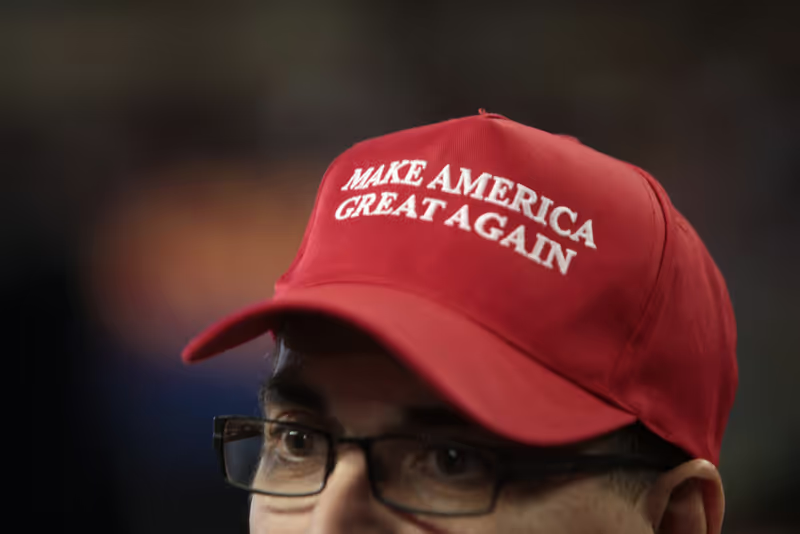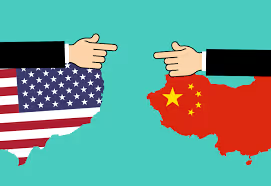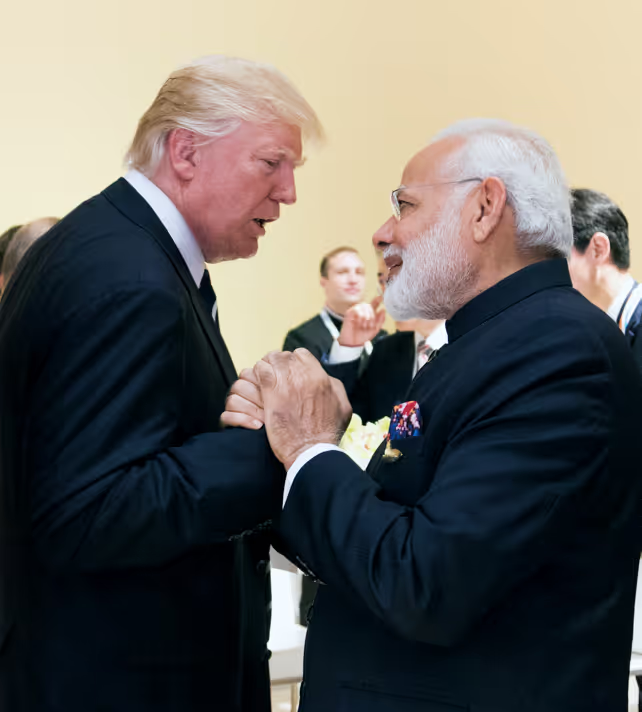

India Amidst Trade Wars
Over the last year, the United States of America under the leadership of President Trump renegotiated trade relations with the European countries, its' North American neighbours, Asian economies and has now brought India under its' lens. Post an apolitical stance in the Cold War era, India opened up its' trade borders extensively to the U.S but no bilateral trade agreement was signed between both countries. Now that we seem to be on the brink of one, here's what to expect...
The evolution of trade establishes the dichotomy of human history and the emergence of civilization. What began as barter way back in 6000 BC slowly morphed into the exchange of commodities through copper and bronze coins, experimentation with gold as the fiat currency, and finally settled into the global trade and settlement system we see today. Trade originated between ancient cities via exchange of their unique wares, spread to empires, the modern era countries and city-states, and soon came to dominate the seven seas. The past two hundred years of written history opened up more trade routes than just the Silk Road, Trans Saharan route and the spice routes. The Industrial Revolution and associated mass production required way more raw material than what could be produced locally. The two World Wars further strengthened the existing trading routes and established trading alliances with arms, steel, cloth, dairy, meat, commodities and finally people travelling all across the world. In came the global supply chains which procured raw materials and resulted in mass-produced goods for profit and convenience. Countries now had to open up their borders to foreign manufacturers, worry about protecting local producers, bring in quality checks and quantity controls, all in the name of market protection and consumer rights.
Global trade linkages are today subject to the law of unintended consequences in the Trump era, and associated collateral damage. The butterfly effect of a linked economy has up-scaled to such an extent that a Middle East oil producers’ decision to turn off the tap might ruin a Latin American coffee season. Globalisation has helped us to manufacture, frack, farm, weave, mine, buy, and sell beyond barriers of cities, states, and countries, involving foreign exchange, freight, shipping costs and tariffs. The iPhone we use is built from scratch from more than 200 components procured from global suppliers, assembled in China, and sold by an American company which assigns a majority of its profits to Ireland. Trade is no longer limited by locale. While this provides the convenience of a wider array of products at the consumer’s disposal, it also signifies the interconnectivity of the world economy today. And more importantly, has brought to the fore concerns of how one country might change the rules in the middle of the game.
Tariffs - The Trump Card
Whilst movement of goods and services across borders has become easier, it is not without its due share of pro-proletariat measures and irrational policy decisions. One such measure happens to be tariffs. Tariffs are essentially taxes levied on goods or services originating from other countries - and could take the form of quantitative or qualitative measures. Countries have sought to use it as a stance to promote protectionism, for reasons as wide-ranging as national security to IP protection. This is achieved by curbing the quantum of imports in order to promote domestic producers or reduce the trade deficit by imposing higher taxes on imports. Supporting domestic producers or service providers, in turn, is assumed to lead to local job creation. Tariffs are also played as a “Trump” card in foreign policies - reducing them to favour friendly nations or increasing them to hurt rival exporting nations' gains.
Tariffs, however, do not always work as intended - higher tariffs can hurt raw material procurement for domestic industries or reduce competition subsequently creating monopolies (think power utilities) or reducing the quality of products or services made available to domestic consumers. If consumers choose to keep purchasing the tariffed products, their consumption expenditure increases. Trade wars may be ignited if the rival country chooses to retaliate with increased tariffs, affecting consumers of both nations adversely.

Is Trump making America great again though?
Trade tariffs today are headline-grabbing, led by Trump and his mercantile leanings. India could soon either be a target of a few such tariffs, or a part of a limited list of nations USA has free trade agreements with, depending on the Presidential tweet of the day. Trade, as it happens to be, seems to be President Trump’s pet theme, and reducing trade deficits with partner nations his avowed goal, along with making America great again. President Trump has formally re-structured trade relations with Korea, Canada, Mexico, and China among others. With India considered to be one of the strongest contenders for future economic growth, a Free Trade Agreement between the two nations isn't wishful thinking. And with the US-India Trade Policy Forum scheduled in November, 2018, the first place to look for clues is U.S stance on the recently concluded trade discussions.
Seoul - Trade in the name of peace
KORUS FTA, signed with South Korea, the sixth largest trading partner for U.S, affects approximately 362Mn consumers in the two countries. For most of last year, President Trump threatened to withdraw from KORUS FTA due to increasing U.S trade deficit. Americans have been historically known to buy more cars from Korea than vice versa, almost ten times more at USD 16Bn, leading to the deficit. Despite President Trump’s threats, the agreement was eventually renegotiated and signed. The changed clauses focus on making business easier for the U.S automobile industry and increased protection to the U.S domestic steel industry. Interestingly, U.S car makers now don’t have to meet Korean automobile safety standards! South Korea has agreed to reduce its’ steel exports to U.S by almost 30%, getting exempted from the new 25% tariff on global steel. Downstream manufacturing industries in the U.S will, in all likeliness, be affected. Though it is unlikely that the South Korea growth story would be terribly impacted by the tariffs, they seem to have accepted the terms more due to worries led by North Korea denuclearization and regional politics. President Moon requires President Trump to be on board for the peace talks with North Korea, lest China further strengthens its’ influence on North Korea. Regional politics and trade agreements seem to go hand in hand.
NAFTA in the 21st century - USMCA
As for the North American trade partners, USMCA is a pending-to-be-signed trade agreement chalked out between U.S, Canada, and Mexico to replace the erstwhile NAFTA (North American Free Trade Agreement). Similar to Korea, President Trump harshly condemned NAFTA as 'the worst trade deal ever'. Yet, not to the surprise of most experts, USMCA is not too different from the erstwhile NAFTA – it does include clauses on minimum labour wage standards to be met by Mexican exporters in the automobile industry, a couple of basis points market penetration increase in the Canada dairy market and changes in the rules governing disputes. Canada and Mexico will have some extra protection against U.S. car tariffs and Mexico will be required to make it easier for workers to organize trade unions. In all of this, U.S domestic automobile makers are expected to be hit by increased costs of production (higher wage costs in Mexico and lesser dependency on inexpensive non-American raw materials), which may ultimately trickle down to the retail consumers. Considering the fire and fury President Trump was spouting about the NAFTA a couple of months ago, USMCA is almost a dampener.
The trade deficit economics
The key though, remains China, the biggest trading partner and the nation with which U.S has the largest trade deficit. President Trump has taken a remarkably tough stance on the rising trade deficit and alleged IP theft disputes with China. The U.S Census Bureau’s data set on US-China trade goes back to as far as 1985 and interestingly even then U.S registered a USD 6Mn trade deficit which in 2018 has now risen to USD 261Bn. Since January this year, U.S started imposing tariffs on a long list of Chinese products. What started with a 30% tariff on solar panel imports has now escalated into tariffs on a ballpark figure of USD 460bn of trade between U.S and China combined. There is a threat of another USD 267Bn of tariffs from both sides, and counting. These tariffs have been imposed on a ragtag list of commodities, ranging from solar panels, washing machines, aircraft parts, cars, pork, soybeans, fruit, nuts, and steel piping, amounting to thousands.

How long can they point fingers at each other?
The trade war that has escalated between the two largest and inter-connected economies, looks set to last long and cut deep, with emotions and threats rather than economics ruling decision-making. They could very well alter the course of world trade and cause permanent damage to global supply chains and existing manufacturing capacities. Job losses and production cuts could be enormous and eventually impact global GDP growth. While most U.S tariffs average out at 2.5%, China currently is facing a 10% tariff on its exports which might escalate to ten times the average, at 25% from next year. China GDP estimates for 2019 and beyond have been downgraded by most economists. In this doomsday scenario, producers and retail consumers in both China and U.S would be better off looking towards other countries.
India Implicated?
Which brings us to India. India falls along similar lines currently when it comes to irking the White House with its trade decisions. India recently signed a USD 5Bn defence deal with Russia, and continued contracting Iranian oil despite U.S sanctions. President Trump has hinted that India's choice to continue with these trade partners is an annoyance and might invoke CAATSA (Countering America's Adversaries Through Sanctions Act) sanctions. Whether this turns out to be an empty threat or fructifies into measurable action is anybody’s guess.
India is caught between the devil and the deep blue sea today. With the growing requirement of crude oil and power in India, the U.S-China trade war makes India the next best bet to export crude oil to. India is currently buying most of its’ oil from the OPEC countries, so diversifying our crude basket to include U.S is a great deal. However, we must also continue importing oil from Iran, due to investments in the Chabahar port – part of the new transit route between India, Iran and Afghanistan bypassing Pakistan, and a geo-political necessity. U.S is growing protective of its' steel and automobile industries, slapping global steel tariffs. In light of the USMCA and the minimum wage regulations for Mexican automobile industry exporters, possible extension to India could result in a disruption in our supply chains, especially considering our labour cost arbitrages. The World Economic Outlook Report for October, 2018 states, "In India, important reforms have been implemented in recent years, including the Goods and Services Tax, RBI’s inflation-targeting framework, the Insolvency and Bankruptcy Code, and steps to liberalize foreign investment and make it easier to do business. Looking ahead, renewed impetus to reform labour and land markets, along with further improvements to the business climate, are also crucial." The report still places India as the fastest growing economy at 7.3% with both U.S and China slowing down. That said, global trade wars led by the U.S and its misguided earnestness on deficits could have a knock-on impact of ~0.3% on global economic growth as per IMF and other estimates. While U.S may no longer be the most powerful ally to have on the global socio-political stage, or a credible trading partner in the Trump regime, it still controls enough variables to bring in additional uncertainties in India's growth story. Aligning with U.S will help us strengthen trade relations, open up wider, lower-tariff US markets, along with a steady and lower-priced crude oil supply, especially shale oil. With H1B visa rules ever-changing, depending on the U.S administration’s whims and fancies and Indian software professionals among the most impacted, closer trade relations with the U.S might help us ease the visa uncertainties the IT industry is currently facing. But it could also mean less stringent pharmacy patent policies for US drugs, having to open up our dairy and agriculture sectors, reform labour laws and regulations.
While U.S's protectionism of domestic industries is understandable to sustain the domestic economy and deal with the Republican vote share in an election year, it risks endangering decades of benefits of globalization and carefully built global supply chains that could irrevocably harm the world economy. A trade agreement is at best a compromise, with both parties involved in a delicate dance, protecting their constituencies while trying to keep disruptions to supply chains and growth prospects down to a minimum. However, a full-blown trade war risks slowing world economic growth, and could be worse for the smaller, developing nations most of which have GDP lower than even the state of California.

Can we make a headway to success?
To sum-up, USMCA is expected to be the template for all future trade deals negotiated by the U.S in its current belligerent regime, as it attempts to address digital age trade issues as well as investment facilitation, environmental and labour standards, and unfair trade practices. USMCA and similar bilateral agreements drawn up by the Trump administration require careful study and scrutiny to mitigate or at least foresee possible risks. As a minority partner and a developing economy, India faces a tightrope walk, having to placate U.S sentiments and still maintaining its independent trade and foreign policies. Caution and strong bilateral relationships with key trading partners will remain the key for India, especially when the global monetary policy is trending towards tightening, led again by the U.S. All we can be is well-prepared. The rest depends on what President Trump carries in his arsenal, and how far he is willing to deploy it. In this interconnected global economy, avoiding collateral damage through trade wars probably remains the best course of action.
References:
1. United States Census Bureau
2. World Economic Outlook, October, 2018
3. Project Syndicate



.jpg?mode=crop&crop=faces&ar=1%3A1&format=auto&w=1920&q=75)